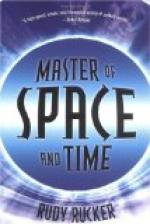Alexander Graham Bell had not resided at the Sanderses’ home very long before he had fitted the basement up as a workshop. For three years he haunted it, spending all of his leisure time in his experiments. Here he had his apparatus, and the basement was littered with a curious combination of electrical and acoustical devices—magnets, batteries, coils of wire, tuning-forks, speaking-trumpets, etc. Bell had a great horror that his ideas might be stolen and was very nervous over any possible intrusion into his precious workshop. Only the members of the Sanders family were allowed to enter the basement. He was equally cautious in purchasing supplies and equipment lest his very purchases reveal the nature of his experiments. He would go to a half-dozen different stores for as many articles. He usually selected the night for his experiments, and pounded and scraped away indefatigably, oblivious of the fact that the family, as well as himself, was sorely in need of rest.
“Bell would often awaken me in the middle of the night,” says Mr. Sanders, “his black eyes blazing with excitement. Leaving me to go down to the cellar, he would rush wildly to the barn and begin to send me signals along his experimental wires. If I noticed any improvement in his apparatus he would be delighted. He would leap and whirl around in one of his ‘war-dances,’ and then go contentedly to bed. But if the experiment was a failure he would go back to his work-bench to try some different plan.”
In common with other experimenters who were searching for the telephone, Bell was experimenting with a sort of musical telegraph. Eagerly and persistently he sought the means that would replace the telegraph with its cumbersome signals by a new device which would enable the human voice itself to be transmitted. The longer he worked the greater did the difficulties appear. His work with the deaf and dumb was alluring, and on many occasions he seriously considered giving over his other experiments and devoting himself entirely to the instruction of the deaf and dumb and to the development of his system of making speech visible by making the sound-vibrations visible to the eye. But as he mused over the difficulties in enabling a deaf mute to achieve speech nothing else seemed impossible. “If I can make a deaf mute talk,” said Bell, “I can make iron talk.”
One of his early ideas was to install a harp at one end of the wire and a speaking-trumpet at the other. His plan was to transmit the vibrations over the wire and have the voice reproduced by the vibrations of the strings of the harp. By attaching a light pencil or marker to a cord or membrane and causing the latter to vibrate by talking against it, he could secure tracings of the sound-vibrations. Different tracings were secured from different sounds. He thus sought to teach the deaf to speak by sight.




